
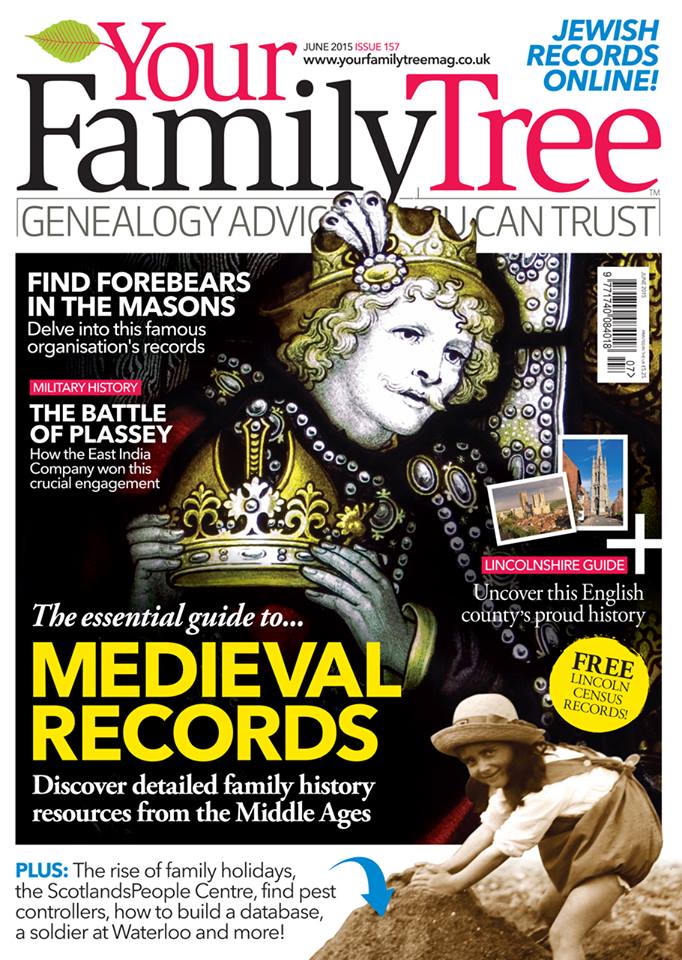
The Essential Guide to Medieval Records Your Family Tree Magazine (Issue 157, June 2015)
Ever wanted to take your family tree all the way back to 1066? Find out how in this cover feature on the best medieval records for family historians.
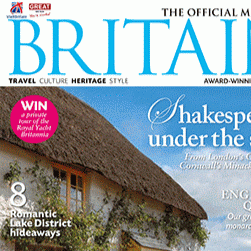
Women Rule Britain Magazine (The Official Magazine of Visit Britain (July/August 2015 issue)
The author of two books charting the history of our female monarchs tells the stories behind some of our most memorable queens.
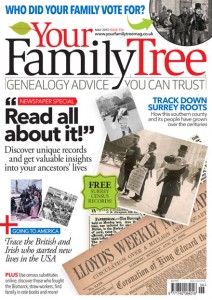
Going Further: Rate Books Your Family Tree Magazine (Issue 156, May 2015)
Rate Books can be a great way of tracing your ancestors between the censuses. Find out where to find them and how to use them in my article.
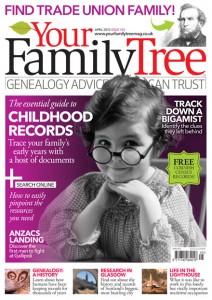
Childhood Records Your Family Tree Magazine (Issue 155, April 2015)
Ever wondered what your ancestors were like as children? Did they go to school? Did they go out to work? Were they illegitimate? Find out how to locate and use childhood records in this month's cover feature.
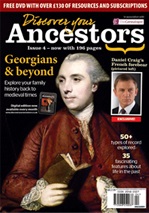
Back to 1066 Discover Your Ancestors (Issue 4)
Think 1600 is a brick wall in your family history research? Think again. With a bit of luck and a lot of hard work, you can potentially take your family tree all the way back to the Norman Conquest. Find out what records are out there and how to use them here.
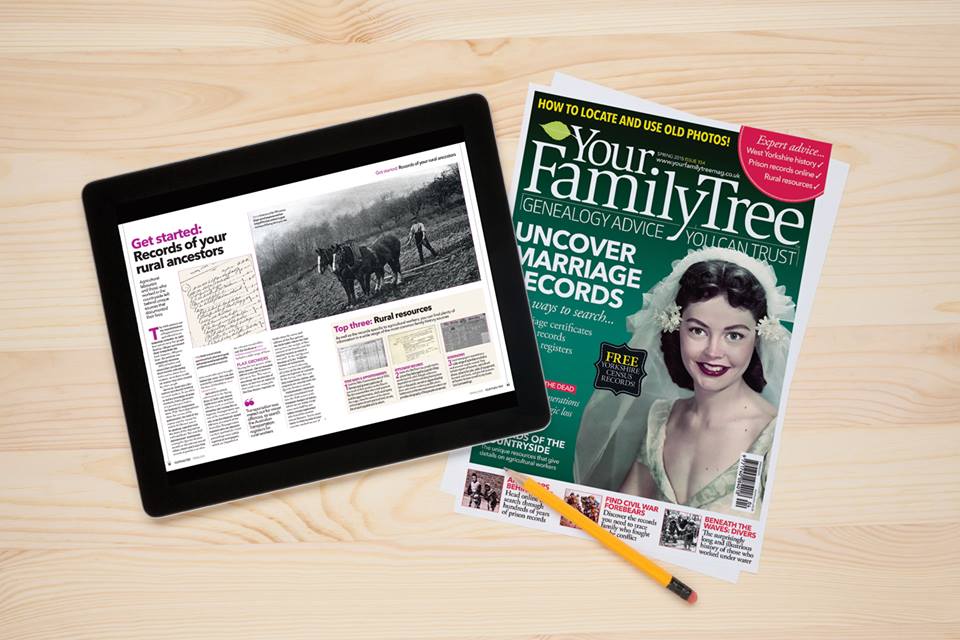
Looking Online: Prison Records Your Family Tree (Issue 154, Spring 2015)
Discovering that your ancestor was on the wrong side of the law can come as a shock, but prison records are also a great way of learning about your forebears and expanding your family tree. Some of the records are even free to access and explore!
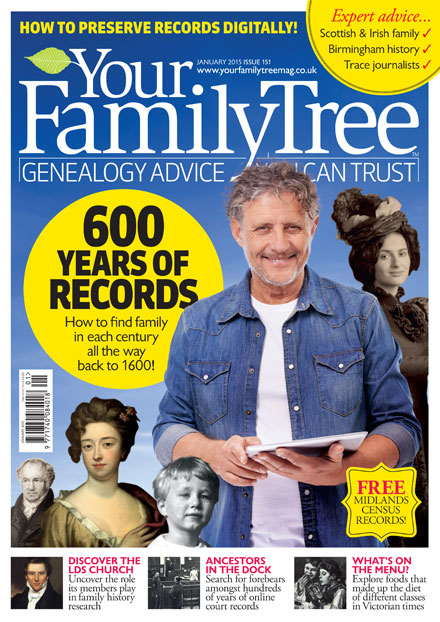
Online Court Records Your Family Tree (Issue 151, January 2015)
Ever wondered whether your ancestors had a criminal past? Alternatively, perhaps they were involved in a long running Chancery dispute to rival Jarndyce v Jarndyce? You can access many court records from the comfort of your sofa, to help you take your family back in time and learn fascinating details of their lives.
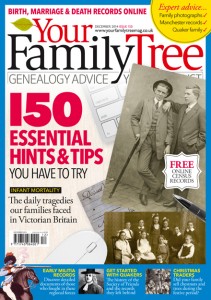
150 Essential Hints and Tips Your Family Tree (Issue 150, December 2014)
To celebrate the 150th issue of the excellent Your Family Tree magazine, read my essential 150 hints and tips on searching for your ancestors.
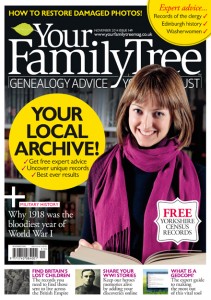
Using Your Local Archives Your Family Tree magazine (November 2014, issue 149)
Local Archives are free to use and the best resource for really taking your family history research back further. Nowhere else will have so many records for you to look through as you search for your ancestors.
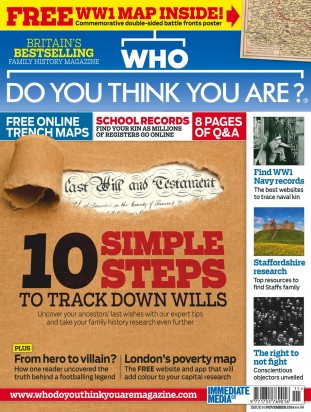
10 Simple Steps to Track Down Wills Who Do You Think You Are? magazine (November 2014)
There is nothing like a will for learning about your ancestors' lives. Follow these simple steps to find your ancestor's last wishes.
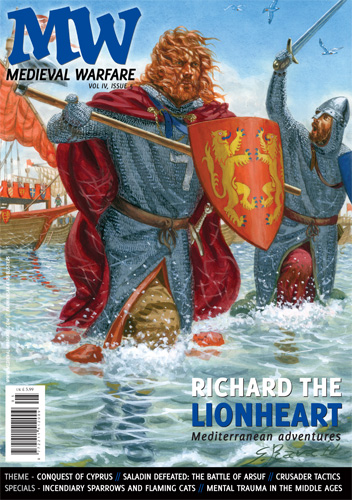
Book Review - Journal of Medieval Military History XI Medieval Warfare Magazine (vol IV, issue 5)
You can read my review of the academic Journal of Medieval Military History, volume XI in the latest issue of Medieval Warfare magazine.
History Quiz - Queens of England BBC History Magazine
http://www.historyextra.com/quiz/history-trivia/history-quiz-queens-england
Think you know your queens of England? Then try the BBC History Magazines quiz to test your knowledge.
Ten things you (probably) didn't know about Anne Boleyn BBC History Magazine
Did you know that Anne Boleyn's great-grandfather was a hatter, or that she physically came to blows with Jane Seymour? Learn all this and more about the best known of Henry's wives in the BBC History Magazine.
The Ten Best English Queens in History BBC History Magazine http://www.historyextra.com/feature/elizabeth-i/10-best-english-queens-history
England has had many queens, spanning 1500 years of history. But just who were the ten best queens and what are the facts of their lives?
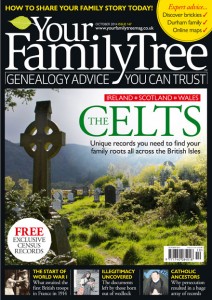
Catholic Recusant Records Your Family Tree issue 147
Catholics were persecuted in the early modern period, with the records that were compiled about them providing an excellent resource for family historians. Find out how to access and use them for your family history research.

The Depiction of Children on the Fifteenth and Sixteenth Century Tombs in Kinlet Church Transactions of the Shropshire Archaeological and Historical Society LXXXVII, 2012
A study of the late medieval and Tudor tombs in Kinlet church, focussing on the depiction of children on the monuments and what this says about family relationships and ideas of commemoration.
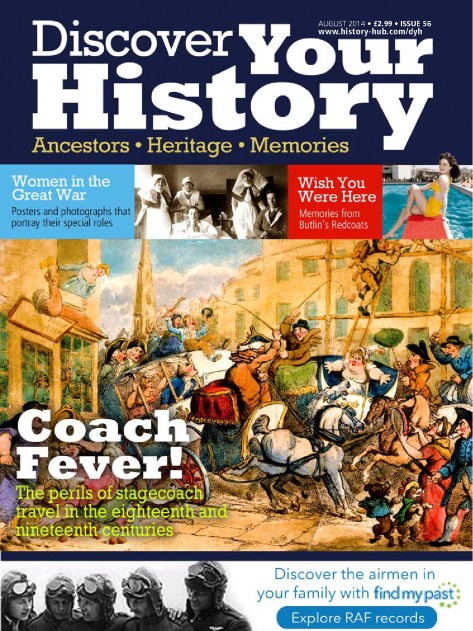
From Peasant to Princess in Six Generations Discover Your History magazine (issue 56, August 2014)
http://www.history-hub.com/dyh
Social mobility was a fact of life in the late medieval period and no family illustrates this so well as the Boleyns of Salle in Norfolk. At the turn of the fifteenth century the head of the family was a manorial tenant, growing crops and keeping sheep. His great-great-great-granddaughter, Anne Boleyn, was crowned as queen of England. Learn more about the history of the family in this fascinating feature.

Looking Online: Find Old Records Your Family Tree magazine (issue 145, August 2014)
http://www.yourfamilytreemag.co.uk/
Ever wanted to take your family tree back further? Find out how to go back deep into the medieval period without leaving the comfort of your sofa.
Find Your Family For Free Your Family Tree magazine (Issue 144, July 2014)
http://www.yourfamilytreemag.co.uk/
Family history research doesn't necessarily have to be expensive. Find out how to make the most of free resources here.
Kings and Queens in Profile: Jane Seymour BBC History Magazine
http://www.historyextra.com/feature/tudors/kings-and-queens-profile-jane-seymour
Just who was Jane Seymour, the third - and most enigmatic - of Henry VIII's six wives? Was she really so meek and mild?
Kings and Queens in Profile: Anne Boleyn BBC History Magazine
http://www.historyextra.com/feature/tudors/kings-and-queens-profile-anne-boleyn
Find out about the life of Henry VIII's second wife and most famous queen, Anne Boleyn, as part of BBC History Magazine's excellent Kings and Queens in Profile series.
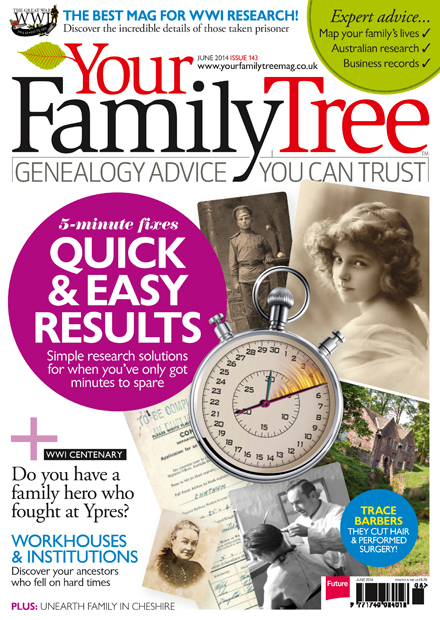
Workhouses and Institutions Your Family Tree (issue 143, June 2014)
http://www.yourfamilytreemag.co.uk/
Workhouse and other institution records are a great way to learn more about the lives of your ancestors. Find out how to begin researching a pauper or institutionalised forebear.
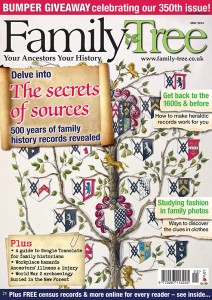
It's All About Class: Heraldic Visitations Family Tree Magazine (May 2014)
If your family were members of the gentry in 1600, the chances are that they will appear in at least one heraldic visitation pedigree. Find out how to make the best use of heraldic visitations - one of the best resources for taking your family back deep into the medieval period.
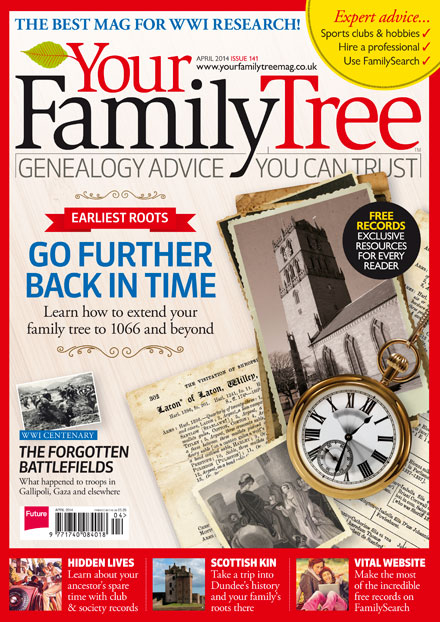
Go Further Back in Time Your Family Tree magazine (Issue 141, April 2014)
http://www.yourfamilytreemag.co.uk/
Have you ever wondered just who your ancestors were in the medieval period? There are a wealth of documents available to help take your family back to 1066 and, perhaps, even further back in time.
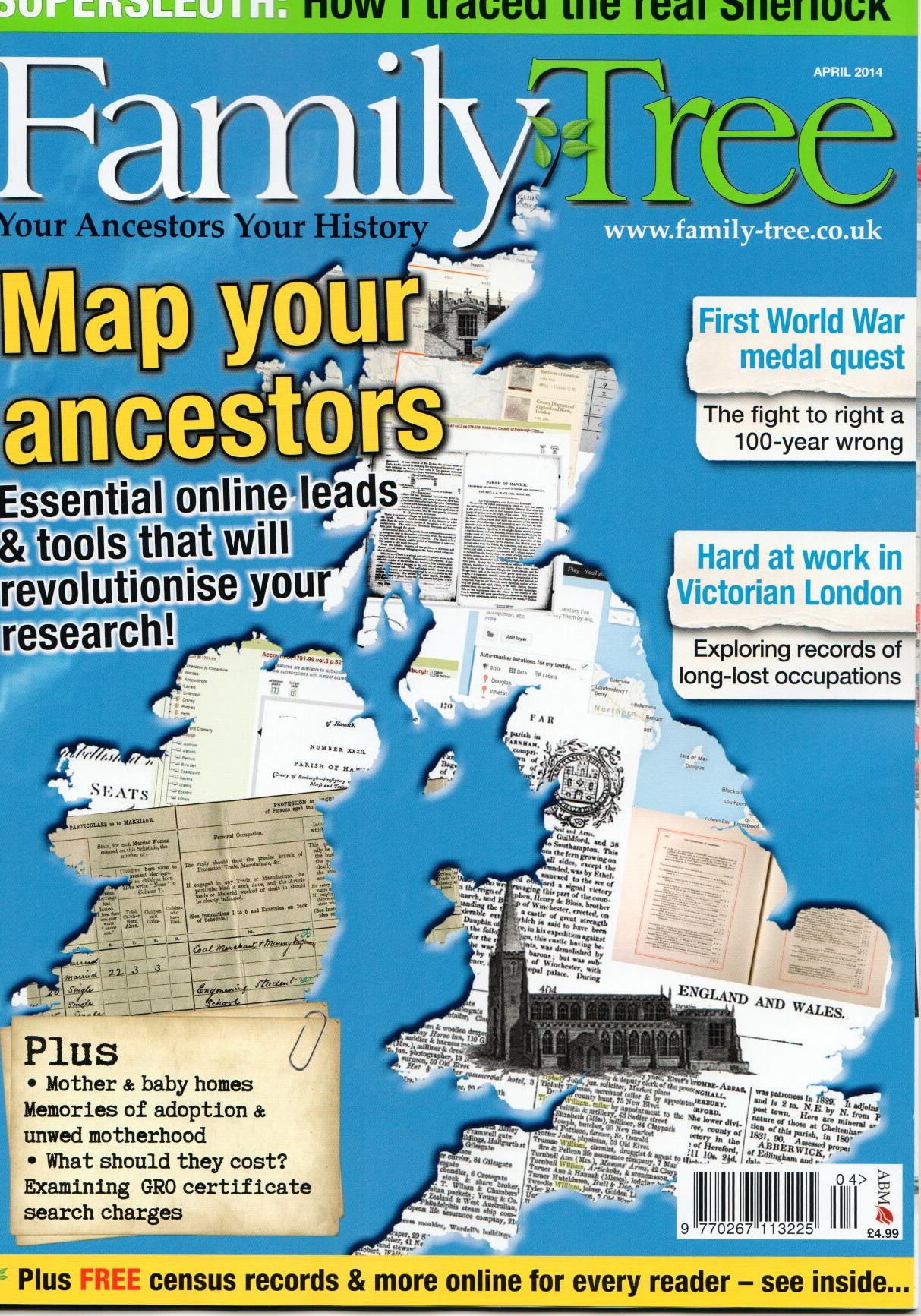
Tracing Medieval Female Ancestors Family Tree Magazine (April 2014)
It can be a challenge to trace your medieval female ancestors but, if you want to take your family all the way back to 1066, you are going to need to follow a maternal line. Here are the best records and how to find them, allowing you to take your own family tree back centuries.
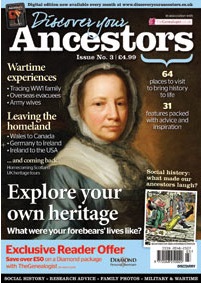
A Worthy Womman Al Hyr Lyve Discover Your Ancestors (Bookazine Issue 3)
Medieval women are less visible than men in the sources, but dig a little and you can discover the fascinating detail of their lives. Find out why married women were legally barred from owning property or chattels. Also, why did one fourteenth century father sit down to write a manual for his daughters on how to live virtuously?
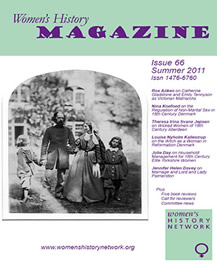
Book Review: Marina Warner's Joan of Arc: The Image of Female Heroism (OUP, 2013) Women's History Magazine (Issue 74 Spring 2014)
I review the fascinating new edition of Warner's seminal study of Joan of Arc's life and afterlife. It is a book that I heartily recommend.
Margaret Skipwith of Ormsby: Mistress of Henry VIII The Anne Boleyn Files
Henry VIII's affair with Bessie Blount is well known, but did he also enjoy a relationship with her daughter-in-law, Margaret Skipwith? Margaret may even have had ambitions to become Henry's fourth wife, although she was quickly married off following the end of the affair.
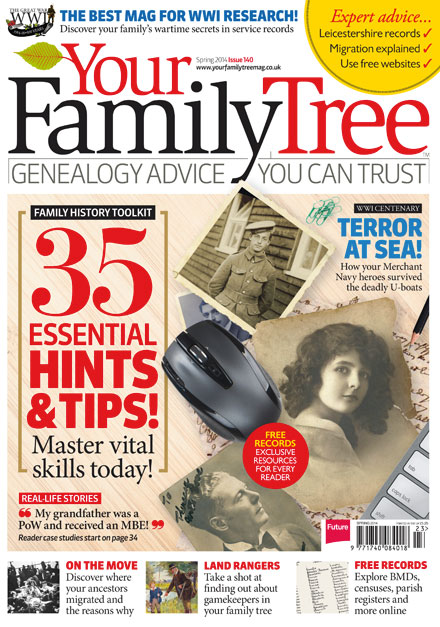
35 Essential Hints & Tips! Your Family Tree (Issue 140, Spring 2014)
http://www.yourfamilytreemag.co.uk/2014/02/19/35-essential-hints-and-tips/
Want to get started with your family history or take your ancestors back further? Follow the 35 essential hints and tips and you will find that family history research has never been easier.
Anne of Cleves, A Flanders Mare: Part 3 Royal Central
http://www.royalcentral.co.uk/blogs/history/anne-of-cleves-a-flanders-mare-part-3-23657
The final part of my series of articles on the underrated Anne of Cleves. Find out just what Henry VIII's discarded fourth wife did with the rest of her life as an ex-queen of England.
Anne of Cleves, A Flanders Mare: Part 2 Royal Central
http://www.royalcentral.co.uk/blogs/history/anne-of-cleves-a-flanders-mare-part-2-22761
The second part of my series of articles on Henry VIII's fourth wife. It is June 1540 and Henry has 'doubts' over his marriage.
The Reeds of Oatlands: A Tudor Marriage Settlement Surrey History volume XII (2013)
A study of the surviving marriage settlement for William Reed of Oatlands and Isabel blount of Kinlet (younger sister of Bessie Blount). The article explores the history of the Reed family, as well as an analysis of the arrangements made for the marriage.
Anne of Cleves, Henry VIII's Flanders Mare: Part 1 Royal Central
http://www.royalcentral.co.uk/blogs/history/anne-of-cleves-a-flanders-mare-part-1-22063
Who was the real Anne of Cleves - the luckiest of Henry VIII's six wives. Find out in the first part of my review of her remarkable life.
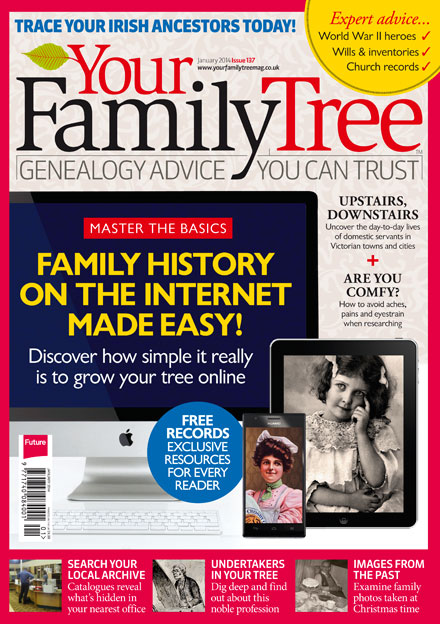
Discover Their Real Stories: Start Your Family History Your Family Tree (Issue 138, February 2014)
http://www.yourfamilytreemag.co.uk/
It has never been so easy to begin researching your family and take them back over several generations. Find out how to get started.
Judith of Francia: Twice Queen of Wessex Royal Central
http://www.royalcentral.co.uk/blogs/judith-of-francia-twice-queen-of-wessex-21259#.UrQQ7vRdWAU
Who was Judith of Francia? This ninth century queen caused scandal wherever she went. A rebellion in England was blamed on her marriage. Later on, she married her stepson before eloping from a nunnery with a third husband. She was able to charm the pope into protecting her against the wrath of her father, the powerful King Charles the Bald.
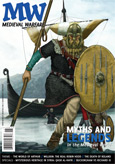
Buckingham's Rebellion Medieval Warfare III.6 (December 2013)
Buckingham's Rebellion in 1483 came close to toppling his former friend, Richard III. Why did the Duke of Buckingham decide to rebel and what role did Margaret Beaufort and Elizabeth Woodville play in the conspiracy? Also, find out how Richard's quick reaction saved the situation and his throne - for a time.
The Other Boleyn Women: Queen Anne Boleyn's Aunts Queen Anne Boleyn Historical Writers http://queenanneboleyn.com/2013/12/12/the-other-boleyn-women-queen-anne-boleyns-aunts-by-elizabeth-norton-2/
There were two Lady Boleyns at court during Anne Boleyn's time as queen. One was her enemy and spied on her in the Tower, while the other was closely allied with her and benefited from her patronage. Just who were Anne Tempest Boleyn and Elizabeth Wood Boleyn, Queen Anne's aunts?
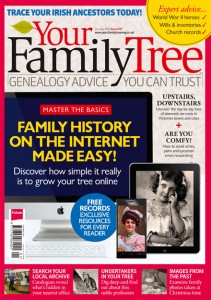
Family History on the Internet Made Easy! Your Family Tree (Issue 137, January 2014)
The internet has revolutionised family history research. Find out how you can take your family back to 1800 and earlier without leaving the comfort of your sofa.
Empress Matilda, Lady of the English Royal Central
http://www.royalcentral.co.uk/blogs/empress-matilda-lady-of-the-english-20646#.UpxT_sRdWAU
The sinking of the White Ship on 25 November 1120 in which William, the only legitimate son of Henry I drowned, ushered in a succession crisis. If all had gone to plan, England would have had its first ruling queen, with Henry's daughter Matilda, named as his heir. Instead, the 'Lady of the English' and her cousin, King Stephen fought for the crown for 19 long years.
A Viking King of England Royal Central
http://www.royalcentral.co.uk/blogs/a-viking-king-of-england-19996#.UoyjN_nxprI
It is exactly 1000 years since England was conquered by the Vikings, with the leader of the raiders declared king. Find out more about the first of three eleventh century conquests of England over at Royal Central.
Elfrida, The First Crowned Queen of England Royal Central http://www.royalcentral.co.uk/blogs/history/elfrida-the-first-crowned-queen-of-england-19109#.Unz_t_nxprI
One of the most powerful people in the tenth century was a woman. Find out the fascinating story of Elfrida, the first woman to be crowned as queen of England.

Queen Elfrida and Anne Boleyn Nerdalicious http://nerdalicious.com.au/history/queen-elfrida-and-anne-boleyn/
Although separated by over five hundred years of history, Queen Elfrida and her descendant, Anne Boleyn, had much in common. Find out how two exceptional women managed to bring themselves to the pinnacle of society and make their marks on English history.
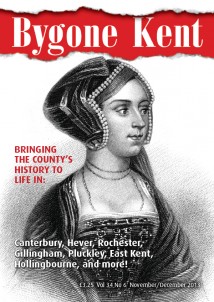
Two Queen Annes in Kent Bygone Kent (vol 34 no.6 Nov/Dec 2013) http://bygonekent.org.uk/
Anne Boleyn and Anne of Cleves shared more than just a first name and a husband. These two queens of Henry VIII also called the historic county of Kent home for several years of their lives. Find out about the associations of Queens Anne Boleyn and Anne of Cleves with Kent, including details of places to visit.
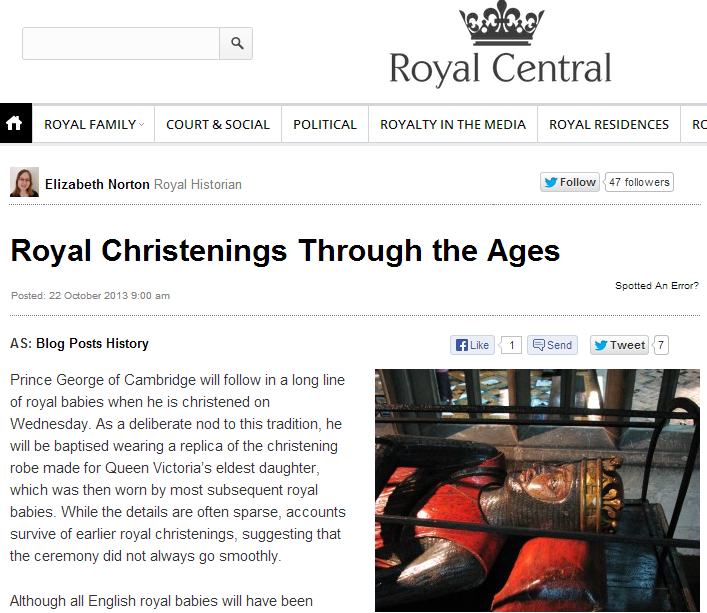
Royal Christenings Through the Ages Royal Central http://www.royalcentral.co.uk/blogs/royal-christenings-through-the-ages-17909
With the christening of Prince George of Cambridge scheduled for tomorrow (23 October 2013), join me as I look at earlier royal christenings that did not go according to plan. From the prince who urinated in the font to rival queens fighting over a christening robe let's hope Prince George's christening goes more smoothly!
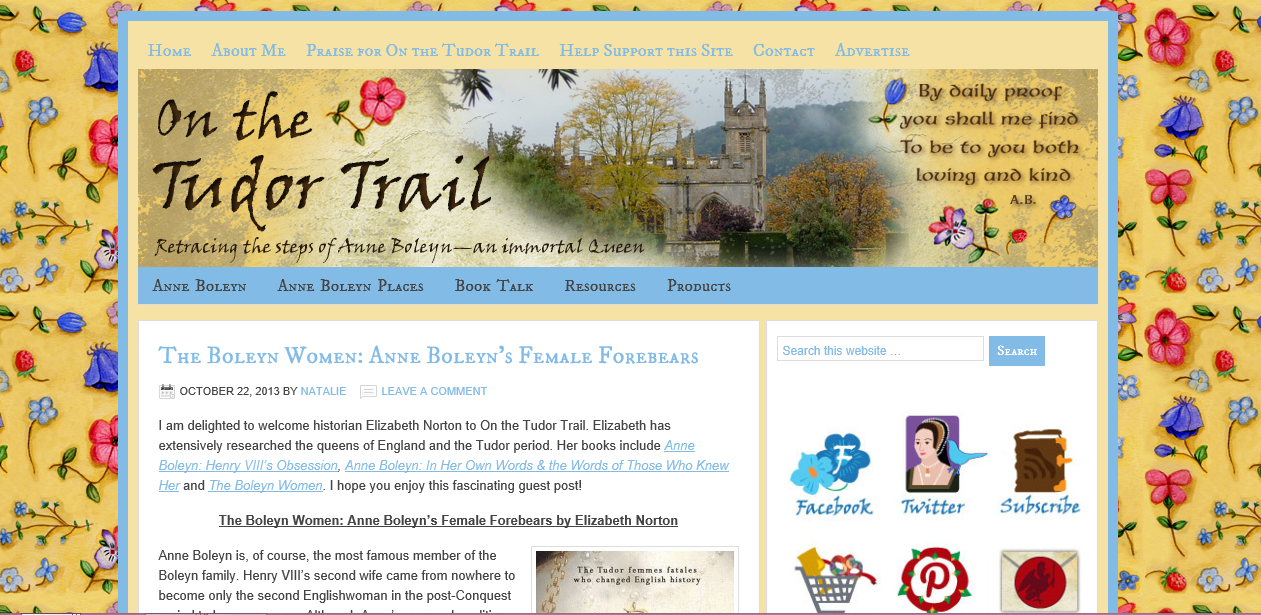
The Boleyn Women: Anne Boleyn's Female Forebears On the Tudor Trail http://onthetudortrail.com/Blog/2013/10/22/the-boleyn-women-anne-boleyns-female-forebears/
The Boleyns rose from peasant origins at Salle in Norfolk to sit on the throne of England. Find out how they did so and the role played by the women of the family, who were often more ambitious and prominent than the men.
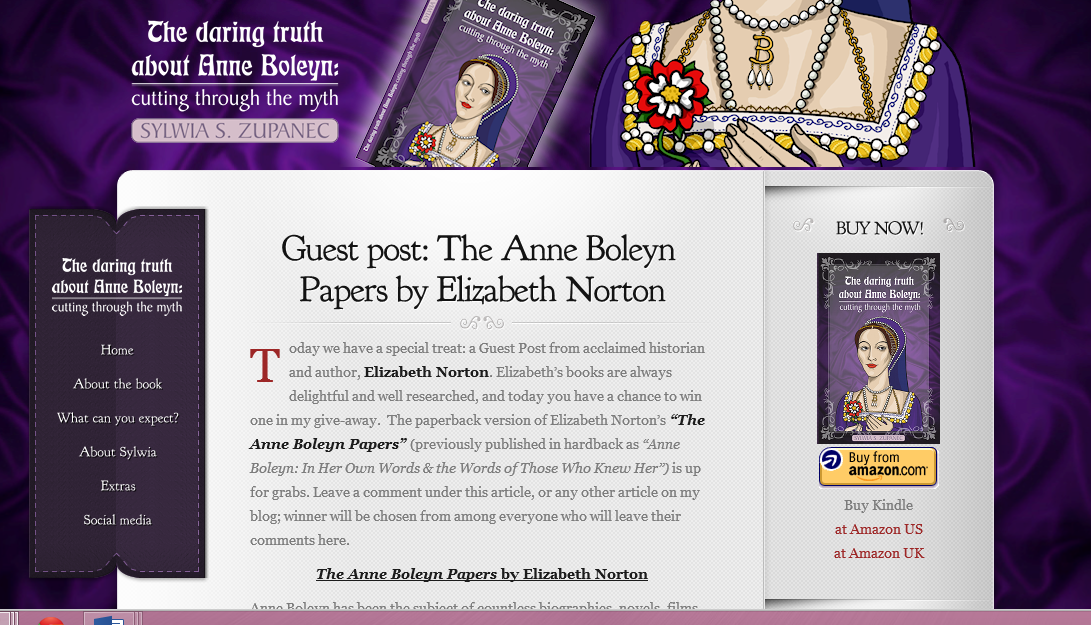
The Anne Boleyn Papers The Daring Truth About Anne Boleyn Blog http://www.thedaringtruth.com/guest-post-the-anne-boleyn-papers-by-elizabeth-norton/
Anne Boleyn is one of the most famous women of the early modern era. It feels like we know her, but how much really survives to document her life and which sources can we rely on?
A One Thousand Year Old Murder Mystery http://www.royalcentral.co.uk/blogs/a-one-thousand-year-old-murder-mystery-17416
On the evening of 18 March 978 King Edward the Martyr was murdered as he arrived at Corfe, the house occupied by his stepmother, Queen Elfrida. Elfrida usually gets the blame for the murder, but find out here, for the first time, just who was really behind the crime.
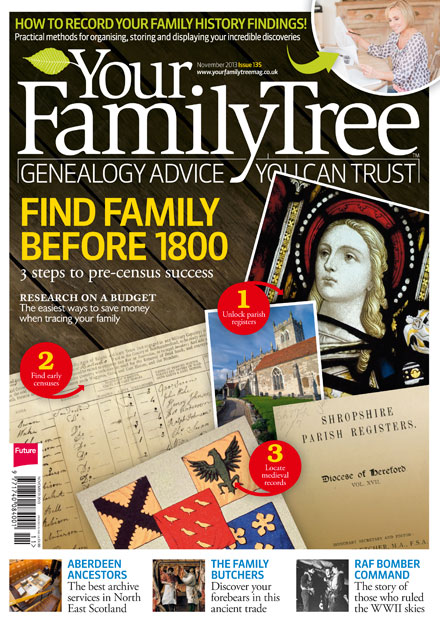
Find Family Before 1800 Your Family Tree (issue 135, November 2013)
I wrote the medieval records section of this extra-long cover feature. Find out all you need to know to trace back to 1066. With a bit of luck and a lot of hard work, you may find that some of your family originally came to England with the Conqueror.

Heraldic Visitations Your Family Tree (issue 135, November 2013)
Heraldic visitations can be the best records for taking your family back from the sixteenth century, deep into the medieval period. While only noble and gentry status families were included, family members could rapidly drop or rise in status over the generations, making a check of the visitations essential if you are trying to trace family back to 1066.
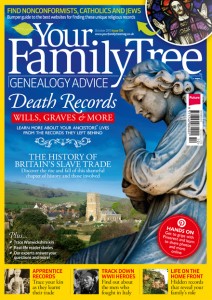
Death Records Your Family Tree (issue 134, October 2013)
You can be certain that all but your most recent ancestors have died. Surprisingly, it can be the records that survive in relation to their deaths which can provide you with the most detail of their lives. Graves, burial records and obituaries, amongst other records, can help you get to know your forebears.
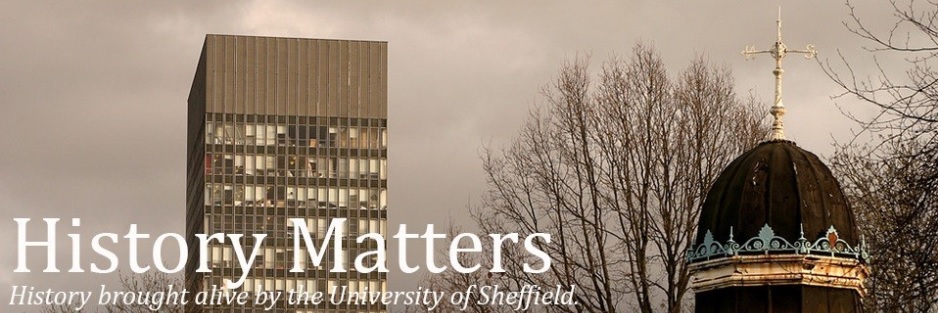
Writing Popular History: Comfortable, Unchallenging Nostalgia-Fodder The University of Sheffield's History Matters Blog http://www.historymatters.group.shef.ac.uk/popular-vs-academic-history/
Popular history is often looked down upon by academic historians, while there is a common belief that academic history is boring or out of touch with what interests people today. As someone who has a foot in both camps, the debate interests me and it is my belief that both can make a contribution to our understanding of history - they are, in many respects, two sides of the same coin.
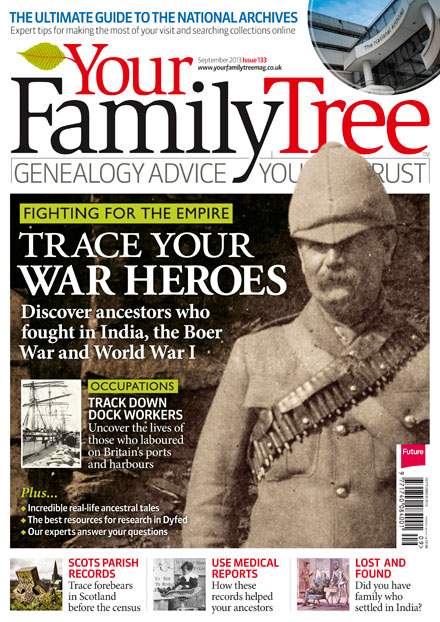
The Ultimate Guide to the National Archives Your Family Tree (Issue 133, September 2013)
The National Archives at Kew holds UK government records dating back to the Domesday Book in 1086. Your ancestors will certainly feature somewhere in its records, whether as an official at the Tudor court, a litigant in a Chancery case or, perhaps, as a prisoner aboard a nineteenth century prison ship. Read this guide for everything you need to know about carrying out your genealogical research at Kew.
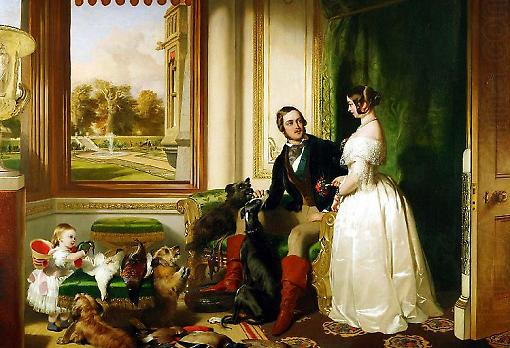
Remembering Vicky, The Queen Britain Never Had New Statesman (23 July 2013) http://www.newstatesman.com/ideas/2013/07/remembering-vicky-queen-britain-never-had
Part of the excitement over the new royal birth was the fact that, for the first time, boy or girl, the baby will be a future monarch. While Henry VIII and George III benefitted from primogeniture - taking the throne in preference to their elder sisters - the most recent example of a girl losing out in the succession was Vicky, the eldest child of Queen Victoria. Who was Vicky and just what sort of queen would she have made?
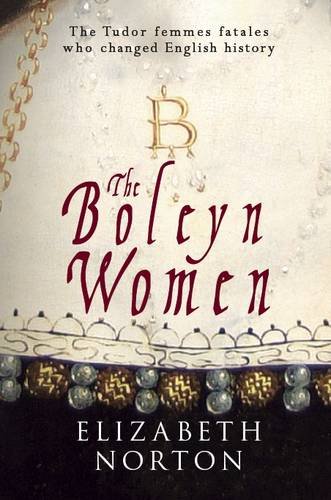
The Second Anne Boleyn The Anne Boleyn Files http://www.theanneboleynfiles.com/the-second-anne-boleyn-by-elizabeth-norton/
Following on from my article on Anne Hoo Boleyn, the great-grandmother of Queen Anne Boleyn, this article looks at Anne Boleyn Heydon, Queen Anne's great-aunt. This Anne Boleyn lived a life centred on Norfolk, marrying well and dying a wealthy and well-connected widow.
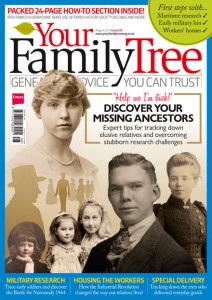
Medieval Military Records Your Family Tree (Issue 132, August 2013)
This summer sees the 500th anniversary of the Battle of Flodden Field, which saw the death of the last British king to fall in battle. Military records are an excellent way of tracing your ancestors back through the early modern and medieval periods. Perhaps your ancestor fought at Flodden Field in 1513?
The First Anne Boleyn The Anne Boleyn Files
http://www.theanneboleynfiles.com/the-first-anne-boleyn-by-elizabeth-norton/
Queen Anne Boleyn was one of several Anne Boleyns. Her great-grandmother, Anne Hoo Boleyn, appears as one of the most vivid and fascinating early Boleyn women in the sources. As the daughter and co-heiress of Lord Hoo and Hastings, she brought her husband, the wealthy merchant, Geoffrey Boleyn, to the fringes of the nobility. She also took an active role in arranging her children's futures after she was widowed.
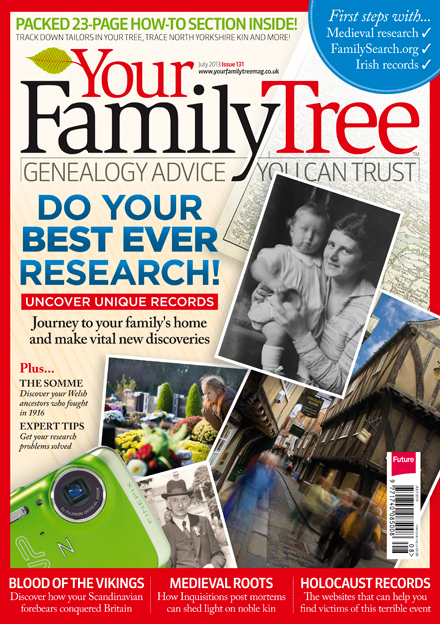
Inquisitions Post Mortem Your Family Tree (Issue 131, July 2013)
Inquisitions Post Mortem can help take your higher status ancestors' back deep into the medieval period. The documents, which are in Latin and held at The National Archives, provide details of landholdings, terms of service and the name, age and relationship of the deceased's heir.
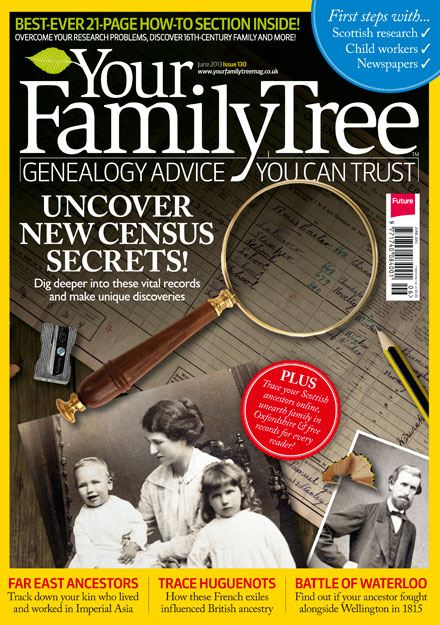
Chancery Records Your Family Tree (Issue 130, June 2013)
Chancery records can be a great way of finding out the detail of your ancestors' lives since our forebears were surprisingly litigious! The amount of surviving records makes locating cases of interest tricky, but the rewards are great.

Anne Boleyn's Norfolk Suffolk Norfolk Life (May 2013) http://www.suffolknorfolklife.com/
Anne Boleyn was born in Norfolk to a family with strong roots in the county. Find out how a family of peasant farmers from Salle ultimately produced the most famous - and tragic - English queen consort.

Medieval Tax Records Your Family Tree Magazine (Issue 127 March 2013)
They say that nothing is certain in life except death and taxes and this can certainly hold true when trying to trace your family back into the medieval period. Tax records tended to be thorough and your ancestors will feature in surviving documents, providing that you know where to look.
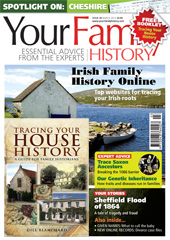
Breaking the 1066 Barrier Your Family History Magazine (March 2013, issue 38)
1066 is usually seen as a barrier for family historians. However, just one drop of royal blood in your post-Conquest family tree can lead you back to the sixth century. It is still possible to construct a unique and personal family tree, providing that you are flexible with which lines of your family you follow.
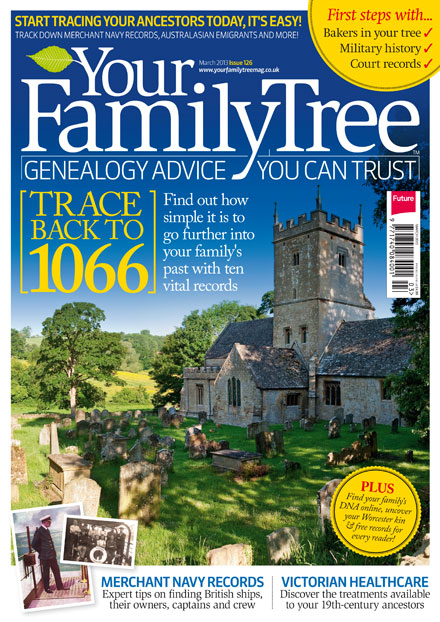
Trace Back to 1066 Your Family Tree Magazine (March 2013, issue 126) www.yourfamilytreemag.co.uk
Tracing your ancestors back to before the nineteenth century can seem like a daunting task. With a little luck and a lot of hard work it is entirely possible to get into the medieval period and, perhaps, even back to 1066. In this article I outline the top ten record types available to enable you to trace your family back into the medieval period, as well as tips for how to find them and what to look out for.
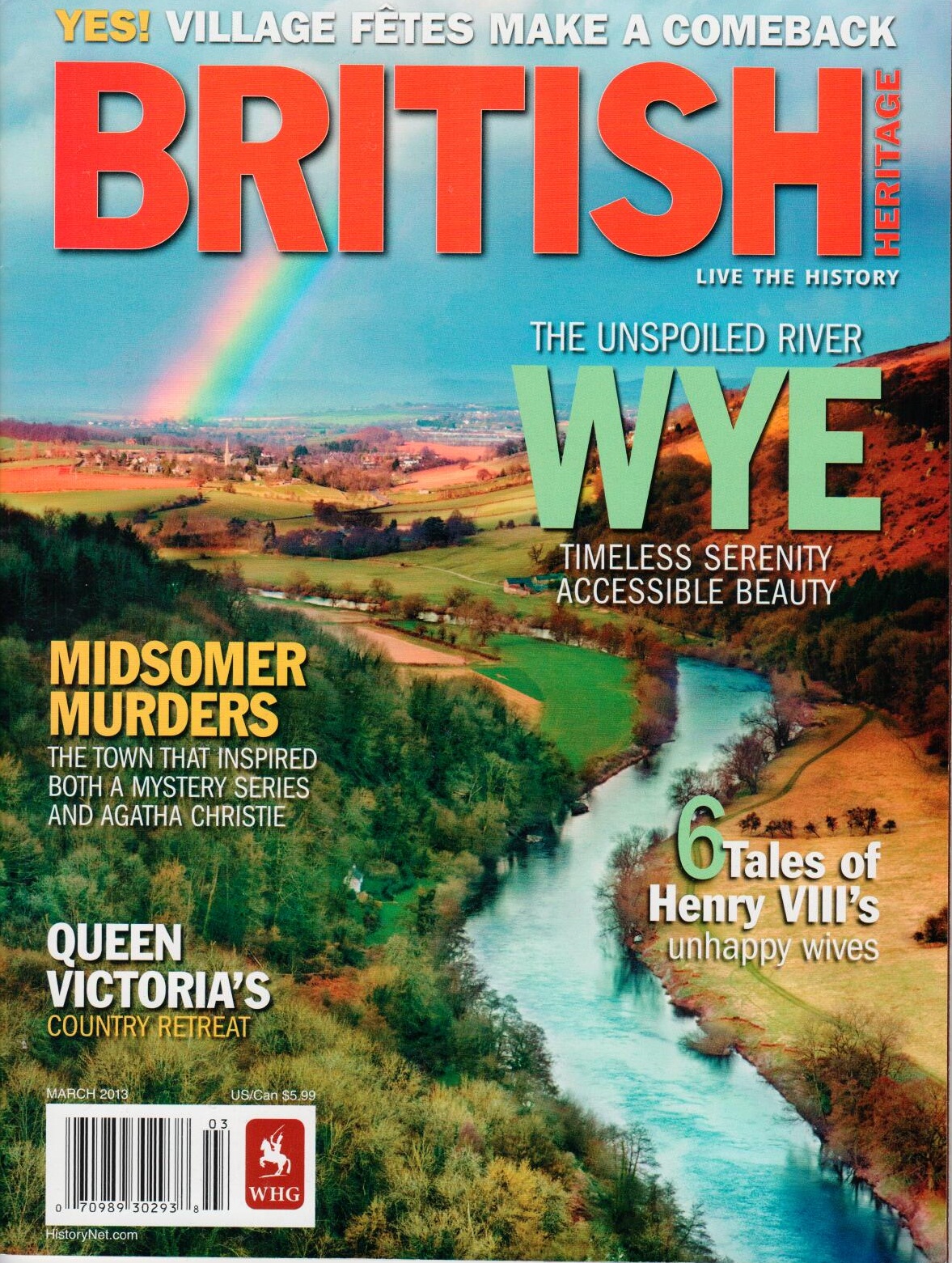
Six Old Wives Tales British Heritage, March 2013 (http://www.historynet.com/magazines/british_heritage)
A look at some of the sites most associated with the six wives of Henry VIII, including Ludlow Castle for Catherine of Aragon and Blickling Hall for Anne Boleyn. The article is the perfect starting point for any Tudor history lovers planning a visit to the UK.
- 
Heraldic Visitations Your Family History Magazine, issue 35 (http://www.your-familyhistory.com/)
An article on Heraldic Visitations, looking at their use in family history. Visitations are an excellent way of identifying medieval and Tudor ancestors and, in some cases, can take families back to 1066. Care should be taken with them however, as they were often based on family memory and contain errors. I use the Blount family of Shropshire as an example.
Was Elizabeth Tailboys the Daughter of Henry VIII http://www.theanneboleynfiles.com/18102/was-elizabeth-tailboys-the-daughter-of-henry-viii-guest-post-by-elizabeth-norton/#more-18102
It is well known that Elizabeth, or Bessie, Blount was the mother of Henry VIII's only acknowledged illegitimate child, Henry Fitzroy, Duke of Richmond and Somerset. What is less well known is that Bessie bore a second child within a year of Henry Fitzroy's birth, something that must raise the possibility that this second child, a daughter named Elizabeth Tailboys, was also the child of the king. This article looks at the sources surrounding Elizabeth Tailboys, such as evidence of her birth date, royal favour shown to her and her relationship to the Tailboys family to raise the possibility that she should indeed be considered to be the unacknowledged daughter of Henry VIII.
Elizabeth Blount of Kinlet: A New Image of Henry VIII's Mistress Identified Transactions of the Shropshire Archaeological and Historical Society 2009 (printed 2012)
The Blount family of Kinlet was, during the latter half of the fifteenth century and the sixteenth century, one of the leading families in
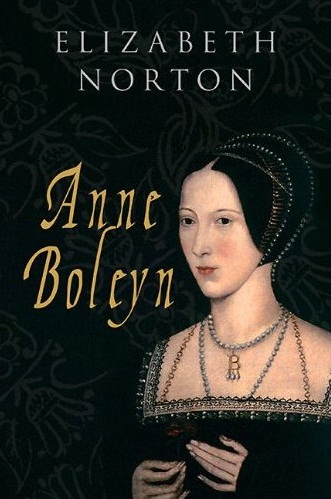
Anne Boleyn Guide
An accessible, heavily illustrated introduction to the life of Anne Boleyn. Alluring but not beautiful, Anne Boleyn's wit and poise won her numerous admirers at the English court, and caught the roving eye of King Henry VIII. Anne was determined to shape her own destiny, first through a secret engagement to Henry Percy, the heir of the Earl of Northumberland, and later through her insistence on marriage with the king, after a long and tempestuous relationship. Their love affair was as extreme as it was deadly, and her fall from grace was total. This book is also the ideal guide to accompany a trip to the heritage sites associated with Anne's life: Hever Castle, the Tower of London, Westminster Abbey Hampton Court Palace, Blickling Hall and Windsor Castle.
This is a 32 page colour guidebook, published by Amberley and available through their website or on Amazon.
Catherine Parr in Danger www.theanneboleynfiles.com/catherine-parr-in-danger/5694/
The plot against Catherine Parr which occured in 1546 which nearly led to her arrest on a charge of heresy is well known. Superficially, the circumstances appear self-evident and Henry VIII's sixth wife came within a whisper of imprisonment in the Tower and, in all likelihood, death. There is no doubt that Catherine perceived herself to be in grave danger, but there is some evidence that matters were not entirely as they seemed and that, far from desiring his last wife's death, Henry VIII instead intended merely to issue a warning to her.
Anne of Cleves and Richmond Palace Surrey History Volume VIII (2009)
Anne of Cleves (1515-1557), the fourth wife of Henry VIII, had a long association with Richmond Palace and used it as her main residence from 1540 until 1547. The palace was the scene of Anne's divorce and it was where she established herself in the anomalous position of a wealthy and unmarried great lady.
This article explores Anne's association with the palace, considering her residence there, works carried out on the palace and the (ultimately successful) attempts made by the government of Edward VI to deprive her of Richmond and other properties.
Scandinavian Influences in the Late Anglo-Saxon Sculpture of Sussex Sussex Archaeological Collections Volume 147 (2009)
The majority of surviving Anglo-Saxon stone sculpture is found in northern England, particularly in areas of the Danelaw. These northern examples of sculpture frequently show Scandinavian-influenced motifs. Such motifs are rare in southern sculpture and even with the accession of the Danish King Cnut to the throne of England in 1016, Scandinavian iconography rarely appears outside the areas of traditional Viking settlement. The surviving corpus of Anglo-Saxon sculpture in Sussex does, however, provide two separate examples of Scandinavian influence: Tangmere, and Jevington.
